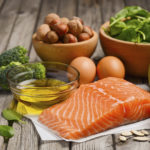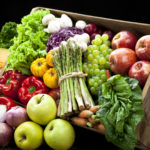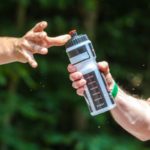
By Tina Paymaster, PHASE IV Functional Nutrition & Health Specialist
When you’re out on a ride for 3-4 hours, refueling is essential to getting the most out of your workout and helping your muscles recover.
Snacks should be portable, quick and easy to digest. They should be higher in carbs as the body breaks carbs into quickly accessible glucose and glycogen. This is your body’s preferred source of fuel and what it needs if you want to ride longer, harder and faster.
According to Bicycle Magazine, “You’ll deplete your glycogen stores after two to three hours of continuous low-intensity training or within 30 minutes of very high-intensity training.”
Therefore, you should start refueling a half hour into your ride because if you wait until you get hungry, it may be too late, and you will bonk. If you’re going 60 minutes or less, 20oz of plain water will get you through your workout. If you’re going longer than 60 minutes, then a sports drink with electrolytes is appropriate. You need to consume 4-5oz every 15 minutes for a total of 20oz per hour of riding. You will never be able to consume all of the calories you burn during a workout, nor should you try as this will result in gastro-intestinal distress (i.e. bloating, cramping and gas). Typically, if you consume 100 calories per hour in a gel, bar or natural food, you will avoid the dreaded and dangerous “bonk.” This is when your muscles shut down because all the muscle fuel is spent and you will have difficulty making it home. You will need more calories for big days of climbing.It’s also a good idea to not eat too much at one time. For example, if eating an energy bar, eat it in small bites over the course of an hour. For more solid foods make sure to wash them down with some water or a sports drink. In addition, you may want to stick to more solid foods earlier in your ride when digestion is a bit stronger, and have sports drinks, gels or chews later in the ride.
Here are some of our top picks for snacks to consume during your longer rides. For rides an hour or less, you should be good with some water or a low-carb electrolyte drink.
- Bananas
- Fig Bars
- Dates or raisins
- Trail Mix
- Electrolyte Drink (We love this one!)
- Energy bars (not protein bars)
- Energy Gels / Chews
Make sure to experiment and see what foods and drinks work best for you. Also don’t forget to refuel with appropriate liquids and foods at least 30 after your workout. If you start this process within a half hour and then eat a meal within the next hour or so, total recovery of muscle energy supplies can be accomplished within 4 hours. If you miss this window, you risk being hungry all day and not being recovered for your next ride. For fluids, drink liberally until you feel satiated.
For peak performance, calculating your exact requirements is critical as small deficits in hydration and calories will affect performance drastically. This can be accomplished with metabolic testing which has become practical and affordable for the amateur cyclist over the last several years. VO2 testing and Resting Metabolic Rate testing will provide an accurate snapshot of your personal physiology and help us map out an efficient nutrition and hydration plan to maximize your performance and weight management.Want to learn more about our metabolic testing, performance nutrition and training programs?
Call us to schedule a complimentary consultation to learn more. 310-582-8212








